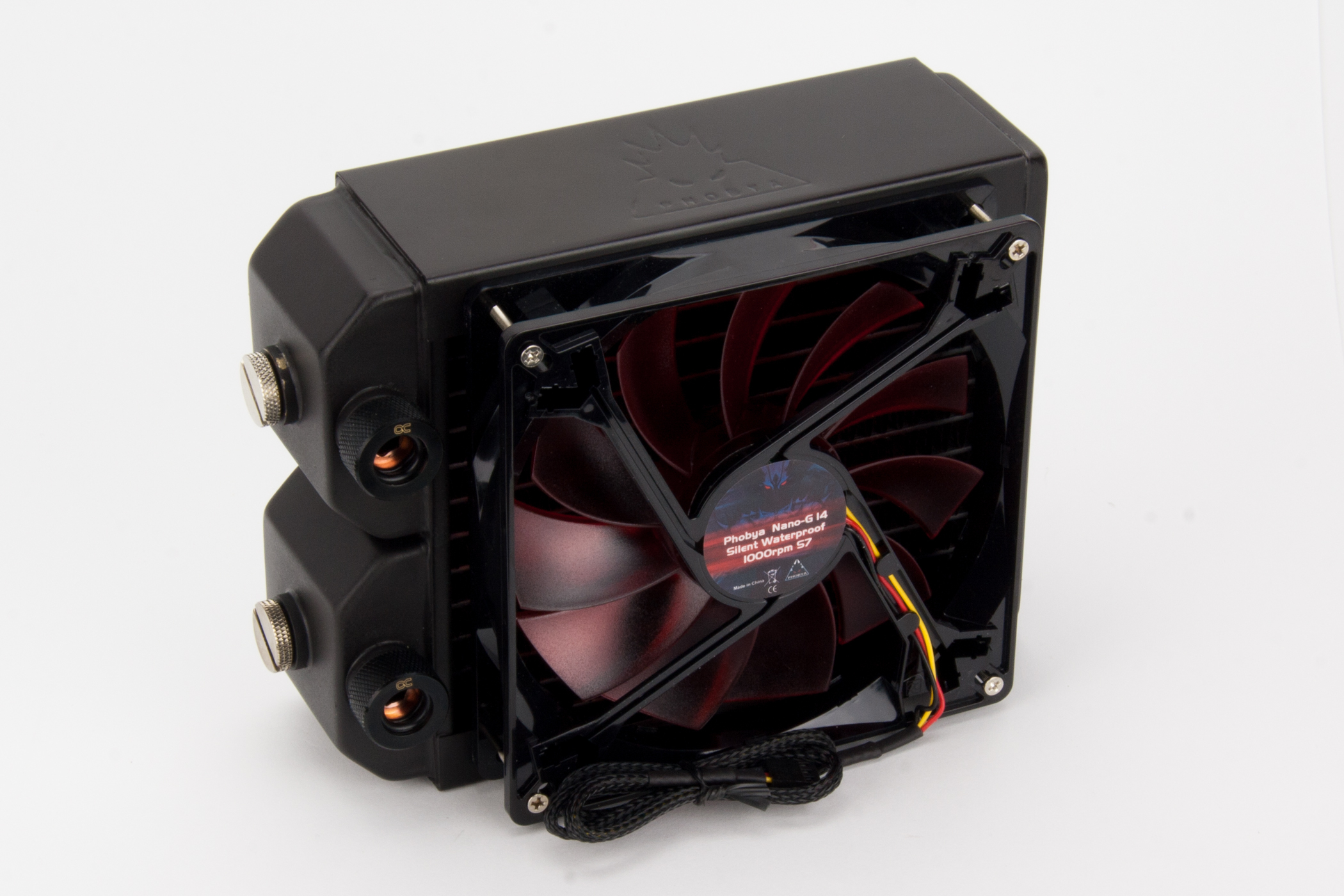The Thermal Data
A total of 6 tests were conducted at 1.0 GPM with fan speeds of 750 rpm, 1300 rpm and 1850 rpm being run in Push Only and Push/Pull. All inclusive this testing takes between 40 – 50 hours of logging time (plus processing the data) to get the results that are presented.
Below is the final data results gathered from at least 5 data logging runs at the flow rate and fan rpm combination. The most stable 15 minute period from each logging run was used and then averaged with the other runs to obtain the data for the table below. A total of 16 temperature sensors were used in the thermal test chamber (8 air in, 2 air out, 3 water in, 3 water out) each take a reading every second and logged via a CrystalFontz unit.
The data in the table below is the averaged results of the logging runs which has then been used to create all the plots and tables there-after.
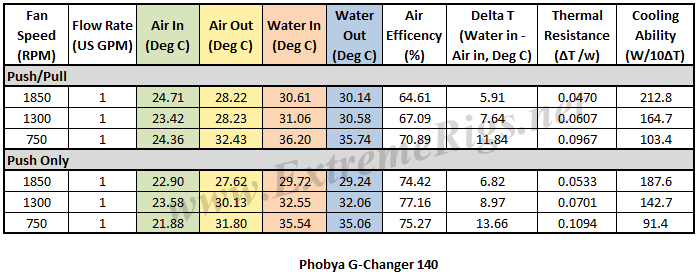 The performance metric of critical importance is the delta between the warm coolant temperature in and the cold ambient air temperature in to the radiator. Given that the system is well insulated and in equilibrium and we know the heat input to the system then we can also calculate a very important number – that is the amount of power required to raise the coolant temperature 1C (or 10C which is a more useful reference point).
The performance metric of critical importance is the delta between the warm coolant temperature in and the cold ambient air temperature in to the radiator. Given that the system is well insulated and in equilibrium and we know the heat input to the system then we can also calculate a very important number – that is the amount of power required to raise the coolant temperature 1C (or 10C which is a more useful reference point).
Let’s take a look at the Delta T results from the tests. Note that the extrapolation of the curve is much more sensitive to error than in between the tested range.
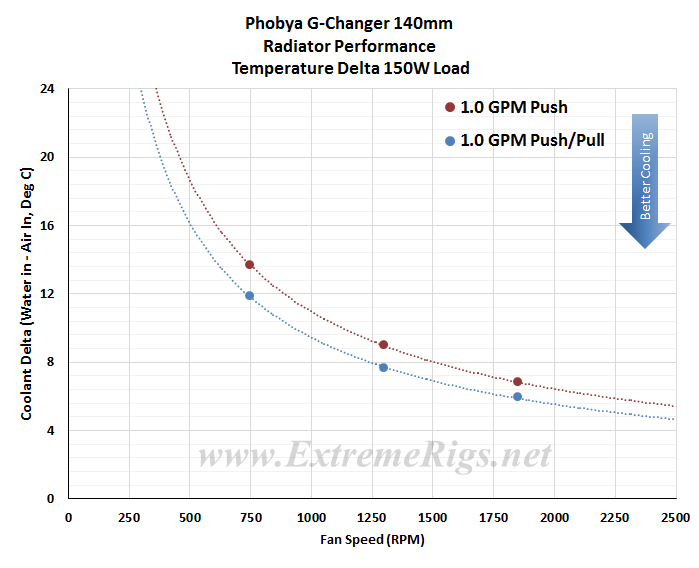 I was not too concerned about the actual delta numbers, more so the trend pattern, and as we should expect, the deltas come down significantly as the fan speed is increased, but in this case the difference between the 750rpm and 1250 rpm is much greater than the difference between 1250rpm and 1850rpm. This could be our first clue as to what fan speeds the G-Changer operates most effectively at (or perhaps inefficiently).
I was not too concerned about the actual delta numbers, more so the trend pattern, and as we should expect, the deltas come down significantly as the fan speed is increased, but in this case the difference between the 750rpm and 1250 rpm is much greater than the difference between 1250rpm and 1850rpm. This could be our first clue as to what fan speeds the G-Changer operates most effectively at (or perhaps inefficiently).
Delta T results (as above) is not always helpful when thinking about how many radiators you would need to cool your system. Instead it’s more useful to know the delta/W, or more usefully, the inverse metric of W/delta C. The metric plotted below tells us how many watts are dissipated by the radiator when the coolant rises 10C above ambient temperatures. (W/10 Delta T):
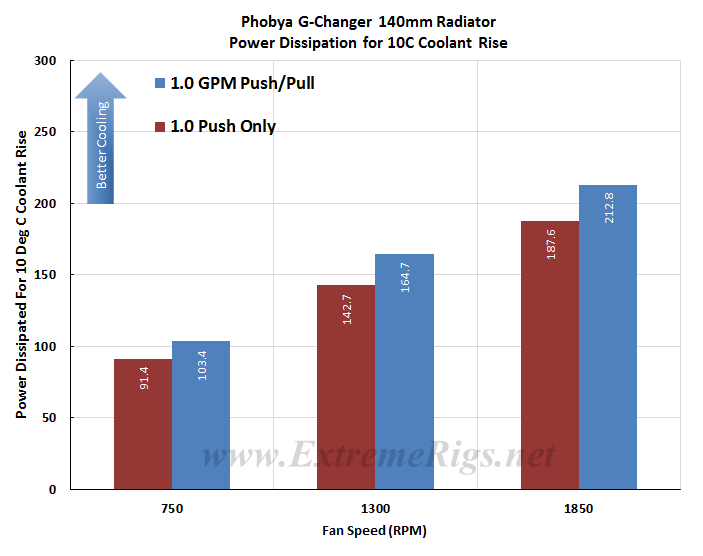 This same data can now be plotted on a chart so that an end user can interpolate their own fan speed. Note again that the extrapolation of the curve is much more sensitive to error than in between the tested range.
This same data can now be plotted on a chart so that an end user can interpolate their own fan speed. Note again that the extrapolation of the curve is much more sensitive to error than in between the tested range.
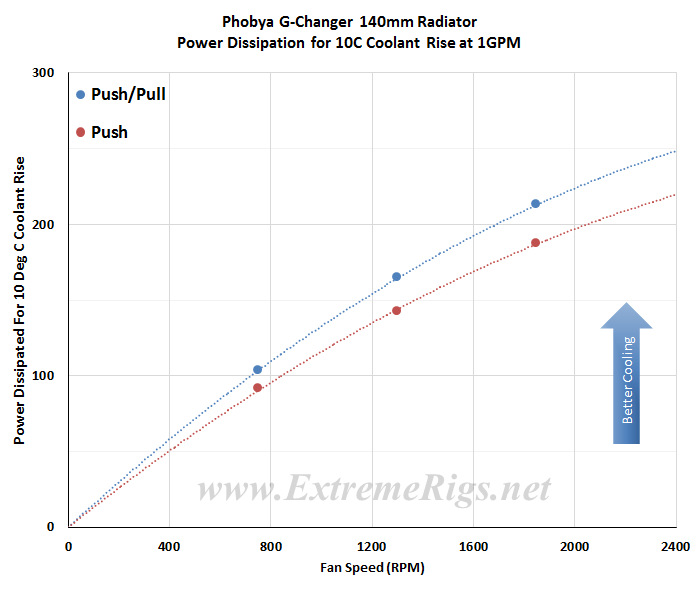 With the G-C 140’s reasonably low fin count of 12 FPI, the results show that a Push Only fan is quite efficient on this radiator at low rpms. At each fan speed adding a second fan (Push/Pull) only yielded an average performance increase of ~12.5%.
With the G-C 140’s reasonably low fin count of 12 FPI, the results show that a Push Only fan is quite efficient on this radiator at low rpms. At each fan speed adding a second fan (Push/Pull) only yielded an average performance increase of ~12.5%.
Now let’s analyze that data some more…







